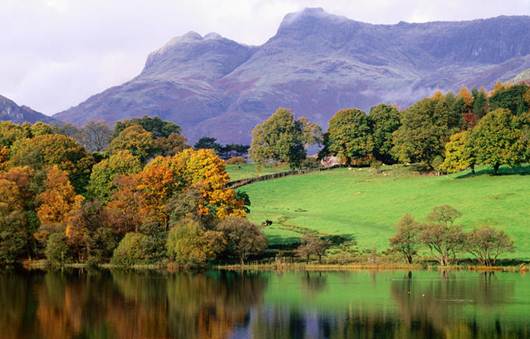From windswept fells to craggy peaks, we
explore the heart of English landscape photography in the Lake District

Lake District - Featured location
England’s largest national park provides
865 square miles of rugged mountainous cliffs and deep sweeping valleys
‘A marriage of grand vistas and gentle
farmland, framed within a backdrop of mountain peaks’
The Lake District is one of England’s most
exciting landscapes. Cherished as a mecca for literally all outdoor enthusiasts
and even more so since photography has become so popular, it’s overwhelmingly
beautiful, yet flip a coin and it can become unpredictable and dangerous. The
stretching scenes are remarkably colourful, and the Lakes are a marriage of grand
vistas and gentle farmland, framed within a backdrop of mountain peaks waiting
to be explored. There is surely no better place to explore and photograph in
the UK.
The Lake District is situated in the
north-west of England. It’s the largest of the National Parks and covers a
mammoth 865 square miles of landscape. Although much of its appearance is
rugged and barren, the land has been shaped by farming for thousands of years.
It contains lakes, fells and mountains, some small and others of considerable size,
which provide landscape photographers with a wide variety of choice. For
composition collectors, or those who strive for greater endeavour, it contains
the setting to train and develop photographic skills in the splendour of
outstanding countryside.

Lake
District National Park in autumn
Nestling in the mountain valleys are
notable settlements. Keswick, Ambleside, Windermere and Bowness are the largest
of the lakeside towns, but there are smaller villages and hamlets scattered all
over the park. Many are the access point to more remote locations, and others
are a welcome refuge from the changeable weather. Yet don’t feel drowned; wet
weather is a specially, after all, it isn’t called the Lake District for
nothing.
Base a trip to the Central Lakes by staying
in Ambleside, a bustling town to the south of Keswick. If offers outstanding
landscape locations as well as a town life to relax in while drying out the
soggy Gortex. Nearby are some of the best mountain scenes as well as a number
of remarkable lakes and caves. Head west to Little Langdale and up to Blea
Tarn, a small corrie lake overlooked by Lingmoor Fell. The jaw-dropping view
northwards from Side Pike towards the Langdale Pikes is an easy (but steep)
climb from a roadside layby. Blea Tarn can be a riot of gold and red in the
autumn months, but don’t just look for the first tripod indent. There are some
superb walks around this area that favour longer focal lengths as well as
lakeside wide angles.
Just north of Ambleside is Grasmere Lake,
which holds some of the most intimate opportunities. Reflections are the key to
great images here, and should the wind drop significantly Grasmere provides
some of the best abstract shooting, in the springtime and especially in the
autumn. Rydal Water, a neighbouring lake to the east is also very photogenic.
The expanse is similar to Grasmere and includes a notable cave on the opposite
side, perfect for a rainy afternoon shoot.